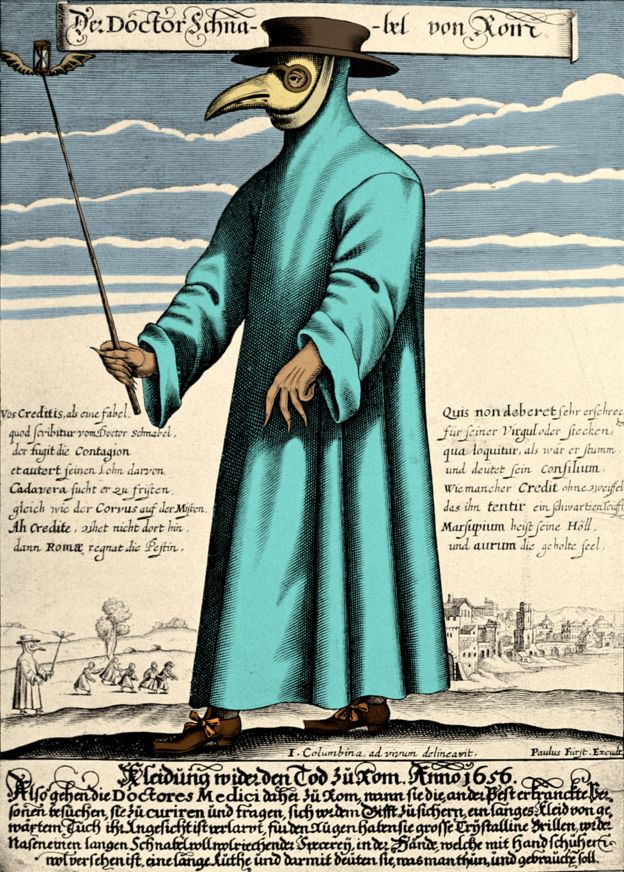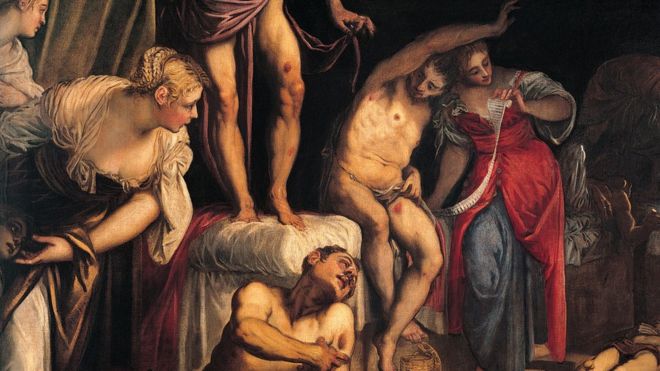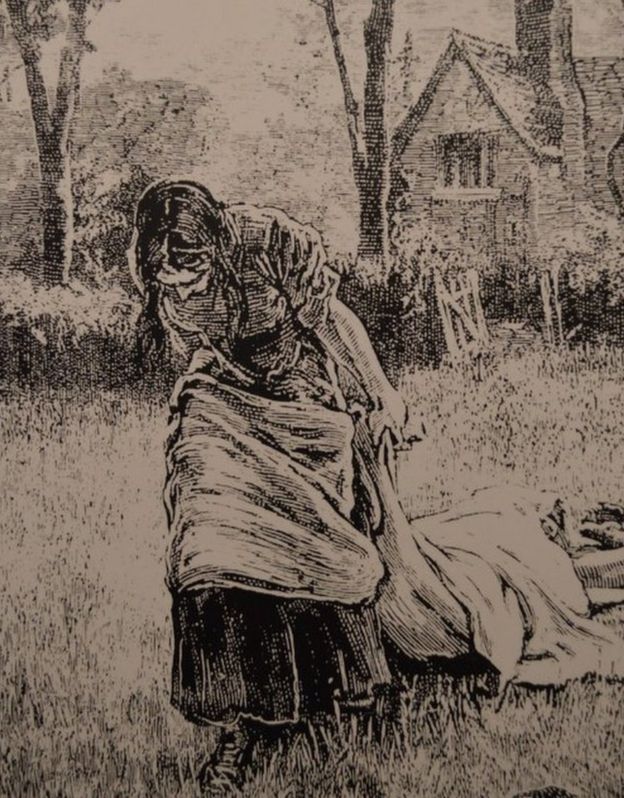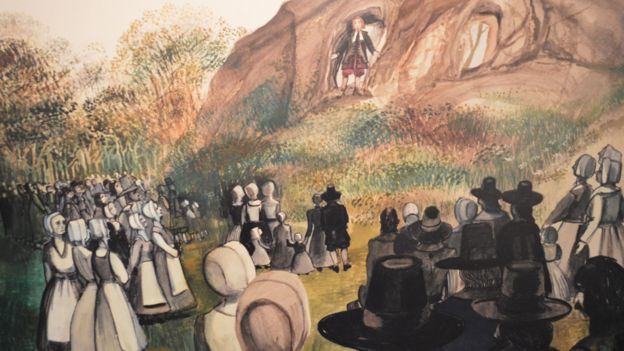'Quarantine' Fought Disease Through The Ages: *Eyam, England, 'Village of the Damned' Plague 1666
-'Coronavirus: How Quarantine Has Fought Disease Through The Ages,' History of Medicine, BBC News, Jan. 31, 2020. Excerpts:
In China's Hubei province, over a dozen cities are in lockdown in the hope of preventing further cases of the new Coronavirus. And Western countries are putting people returning from Wuhan, the city at the centre of the outbreak, into enforced isolation for up to two weeks. Quarantine has long been used to prevent the spread of diseases. The term itself comes from the first known example of the isolation method.

As the Black Death raged through Europe in the 14th century, Venice enforced a rule where ships had to anchor for 40 days before crew and passengers were allowed to come ashore. The waiting period was named "quarantino", which derives from the Italian for 40. It's unclear where exactly the 40 days concept came from, said Mark Harrison, Professor of the History of Medicine at the University of Oxford. One possibility is that it was a biblical reference - the idea of spending 40 days and 40 nights in the wilderness as Jesus is said to have done.
Over time, the duration of quarantine has been shortened, but it remains key to limiting disease outbreaks across the globe.

- 'Plague Doctor,' a 1656 engraving of Dr Schnabel of Rome in protective clothing typical of the city's plague doctors at the time.
In the UK, one of the most famous examples is the English village of *Eyam's (Below) self-imposed quarantine during the bubonic plague. Between September and December 1665, 42 residents of the Derbyshire village died. In June 1666, the newly appointed rector Willliam Mompesson decided the village should be quarantined. He told his parishioners that the village must be enclosed with no-one allowed in, or out. He said the Earl of Devonshire had offered to send food and supplies if they agreed to be quarantined.
The rector told villagers he would do everything in his power to alleviate their suffering and remain with them. That August, the village saw a peak of five or six deaths a day - but hardly anyone broke the cordon. Over time, the number of cases fell and by November the disease was gone. The lockdown had worked.

- 'Plague Cottage,' village of *Eyam, UK (*Below) enforced its own quarantine to protect other villages from plague.
Nowadays, most quarantines are imposed by governments or health bodies. "When quarantine measures are introduced, they're not just based on medical calculations about whether or not they're going to be effective in stopping or slowing the advance of the infectious disease," said Mr Harrison. "You take measures such as quarantine in order to meet expectations of other governments, but also to reassure your own population."
In San Francisco in 1900, Chinese immigrants were quarantined after a Chinese man was found dead in a hotel. It was later confirmed that he had died of the plague. Concerned, police officers strung rope and barbed wire around a section of Chinatown. Residents were not allowed to come in or out, and only police and health officials were allowed to cross the barrier.
◾What does being in quarantine mean? ◾Britons on Wuhan flights to be quarantined
During World War One, about 30,000 sex workers were quarantined amid fears about the number of rising sexually transmitted diseases. They were allowed to leave once it was confirmed they no longer had STDs...
More, https://www.bbc.com/news/world-51308542

- Women put dressings on plague victims' wounds, a painting by Venetian Jacopo Robusti (Tintoretto) 1549.
_____________
* Eyam Plague: The Village Of The Damned,' (Derbyshire) BBC News, Nov. 5, 2016. Excerpts:
On 1 November 1666 farm worker Abraham Morten gasped his final breath - the last of 260 people to die from bubonic plague in the remote Derbyshire village of Eyam. Their fate had been sealed four months earlier when the entire village made the remarkable decision to quarantine itself in an heroic attempt to halt the spread of the Great Plague. This is the story of the villagers who refused to run.
Abraham was in his late 20s when he died. He was one of 18 Mortens listed as plague victims on the parish register.
But the story of the plague in Eyam had begun 14 months earlier, with the arrival of a bale of cloth sent from London, where the disease had already killed thousands of inhabitants. Contained in the bale of damp cloth were fleas carrying the plague. A tailor's assistant called George Viccars was said to have opened the bale and hung the cloth in front of the hearth to dry, unwittingly stirring the disease-ridden fleas contained within the parcel. He became the first of the plague's victims in the village.
"That poor man was just visiting Eyam to help make clothes for Wakes Week [a religious festival] - and sadly never left," said Eyam churchwarden Joan Plant, who has researched the story. The pestilence swept through the community. Between September and December 1665, 42 villagers died and by the spring of 1666, many were on the verge of fleeing their homes and livelihoods to save themselves.
It was at this point that the newly appointed rector, William Mompesson, intervened. Believing it his duty to prevent the plague spreading to the nearby towns of Sheffield and Bakewell, he decided the village should be quarantined. However, as if persuading his parishioners to sacrifice their lives was not difficult enough, he had another problem - he was already deeply unpopular with the villagers. ..On 24 June 1666, Mompesson told his parishioners that the village must be enclosed, with no-one allowed in, or out. He said the Earl of Devonshire, who lived nearby at Chatsworth, had offered to send food and supplies if the villagers agreed to be quarantined.
Mompesson said if they agreed to stay - effectively choosing death - he would do everything in his power to alleviate their suffering and remain with them, telling them he was willing to sacrifice his own life rather than see nearby communities desolated...
Read More, https://www.bbc.com/news/uk-england-35064071
History of Quarantines From Bubonic Plague To Typhoid Mary
https://www.democraticunderground.com/1016246380

- Elizabeth Hancock of Eyam had no choice but to drag her 6 children and husband to a field next to the family farm and bury them. The family members perished in a span of 8 days.

- William Mompesson took it upon himself to convince the remaining villagers to stay. Museums Sheffield.
radical noodle
(8,000 posts)Thanks for posting.
appalachiablue
(41,140 posts)
At services in Eyam, families stood apart from each other for safety.
radical noodle
(8,000 posts)I didn't know that much about it either, although I recently reread Sarum and there was a section that dealt with the plague. That's a great book if you haven't read it and enjoy history mixed with fictional characters.
appalachiablue
(41,140 posts)in England for a semester in college, great times.
radical noodle
(8,000 posts)It's a great storyline with so much history. It's long, but never boring.
murielm99
(30,741 posts)It just went to the top of my list. Thanks!
radical noodle
(8,000 posts)It's really worth the time. I learned so much I didn't know about that area.
virgogal
(10,178 posts)Hekate
(90,706 posts)Fortunately none of us tested positive. My dad, who had the least exposure, was allowed to return to work while the rest of us were cooped up. (Fortunately for all of us, we had a little house and a backyard, so it wasn't like being confined to an apartment.)